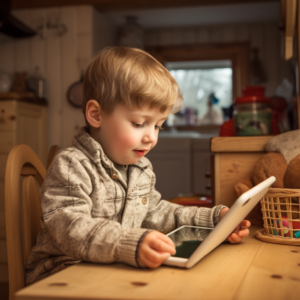Remote learning has become an integral part of the educational landscape, even for preschoolers. Building a strong foundation for remote learning is crucial to ensure that young children can engage effectively with online platforms while fostering their social, emotional, and cognitive development. This article explores key strategies to prepare preschoolers for remote learning, emphasizing a holistic approach that considers the unique needs and characteristics of early childhood education in a virtual environment.
1. Establishing a Supportive Learning Environment:
- Physical Space: Create a designated and organized learning space at home. Ensure it is free from distractions, well-lit, and equipped with essential materials to support virtual learning.
- Comfort and Accessibility: Ensure that the learning space is comfortable and accessible for preschoolers. Provide age-appropriate furniture, tools, and resources that encourage engagement and participation.
2. Engaging Parents as Partners:
- Orientation Sessions: Conduct orientation sessions for parents to familiarize them with the virtual learning platform, tools, and expectations. Offer guidance on how to create a conducive learning environment at home.
- Communication Channels: Establish clear communication channels between educators and parents. Regular updates, newsletters, and virtual meetings contribute to a collaborative approach in supporting preschoolers’ learning.
3. Promoting Digital Literacy:
- Introduction to Technology: Introduce preschoolers to basic technology skills. Teach them how to navigate online platforms, use devices, and engage with age-appropriate educational apps.
- Supervised Technology Use: Encourage supervised and limited use of technology. Foster a balanced approach where technology is a tool for learning rather than a passive entertainment medium.
4. Structured Daily Routines:
- Consistent Schedule: Establish a consistent daily routine that includes structured learning time, playtime, breaks, and other activities. Consistency provides a sense of predictability and security for preschoolers.
- Visual Schedules: Utilize visual schedules with images or icons to help preschoolers understand and anticipate the sequence of activities throughout the day.
5. Incorporating Interactive and Playful Elements:
- Engaging Activities: Plan interactive and play-based activities that align with learning objectives. Incorporate games, storytelling, and hands-on projects to keep preschoolers actively involved.
- Virtual Show-and-Tell: Organize virtual show-and-tell sessions where preschoolers can share items, stories, or experiences with their classmates. This fosters social interaction and communication skills.
6. Fostering Social and Emotional Development:
- Virtual Circle Time: Implement virtual circle time to promote social connections. Activities during circle time can include greetings, sharing feelings, and singing songs, enhancing preschoolers’ emotional well-being.
- Emotional Check-Ins: Incorporate regular emotional check-ins to gauge how preschoolers are feeling. Provide opportunities for them to express emotions and offer support when needed.
7. Ensuring Inclusive and Differentiated Instruction:
- Individualized Support: Recognize and address the diverse needs of preschoolers. Provide individualized support and differentiated instruction to accommodate various learning styles and abilities.
- Inclusive Practices: Implement inclusive practices that consider the cultural backgrounds, languages, and experiences of preschoolers. Ensure that learning materials are diverse and representative.
8. Building Peer Connections:
- Virtual Playdates: Facilitate virtual playdates or small group activities to encourage peer interactions. This helps preschoolers build relationships and develop social skills in a digital environment.
- Collaborative Projects: Plan collaborative projects where preschoolers can work together on shared tasks. This fosters a sense of community and teamwork.
9. Assessing Progress through Informal Methods:
- Observational Assessments: Use observational assessments to gauge preschoolers’ progress. Focus on informal methods such as anecdotal notes, checklists, and project-based assessments that align with developmental milestones.
- Parental Input: Seek input from parents regarding their observations of their child’s engagement, interests, and development. This collaborative approach enhances the understanding of each child’s unique strengths and areas for growth.
10. Professional Development for Educators:
- Training Opportunities: Provide ongoing professional development opportunities for educators. Training sessions can focus on effective online teaching strategies, technology integration, and addressing the social-emotional needs of preschoolers.
- Collaborative Learning: Foster a culture of collaborative learning among educators. Encourage the sharing of best practices, resources, and innovative approaches to remote preschool education.
Conclusion:
Preparing preschoolers for remote learning requires a thoughtful and comprehensive approach that goes beyond the technical aspects of online platforms. Building a strong foundation involves creating a supportive learning environment, engaging parents as partners, promoting digital literacy, and fostering social-emotional development. By considering the unique needs of young learners and incorporating interactive and playful elements, educators can enhance the quality of remote preschool education. The collaboration between educators, parents, and the wider community is essential in creating a holistic and enriching virtual learning experience that sets the stage for a positive educational journey for preschoolers.



